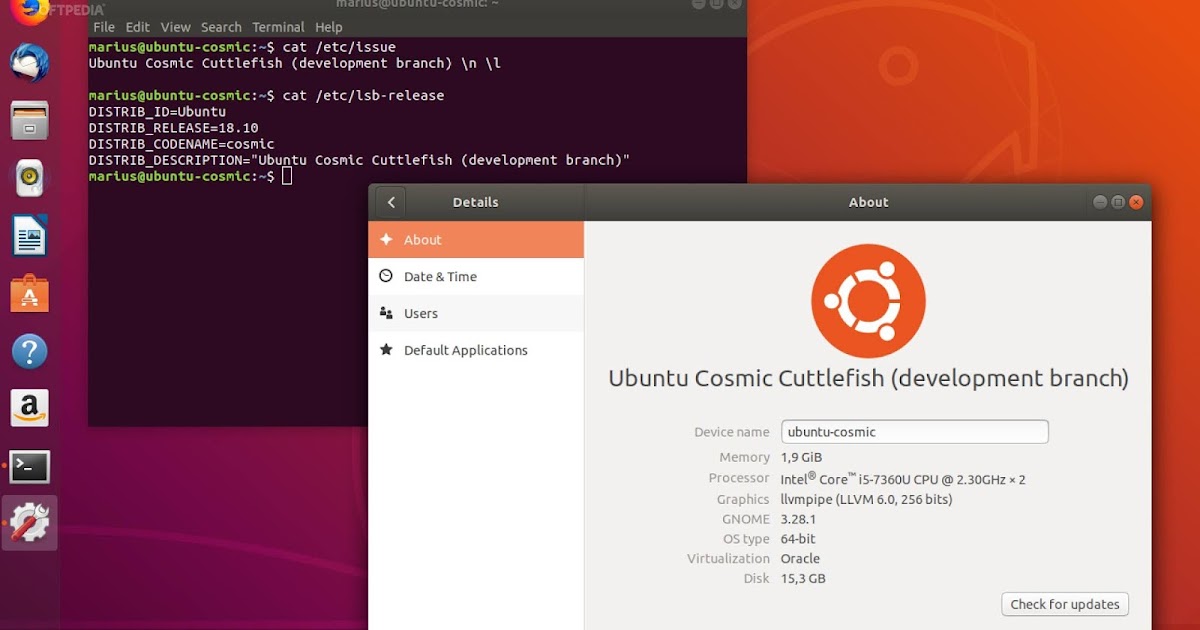

- #Ubuntu download servers install#
- #Ubuntu download servers update#
- #Ubuntu download servers manual#
- #Ubuntu download servers archive#
- #Ubuntu download servers full#
#Ubuntu download servers full#
Windows 10/Server 2016/Server 2019 installer (NSIS)Ī summary of the changes is available in Changes.rst, and a full list of changes is available here. Updated OpenSSL and OpenVPN GUI are included in Windows installers. The I602 Windows installers fix a possible security issue with OpenSSL config autoloading on Windows (CVE-2021-3606). This release also includes other bug fixes and improvements. It fixes two related security vulnerabilities (CVE-2020-15078) which under very specific circumstances allow tricking a server using delayed authentication (plugin or management) into returning a PUSH_REPLY before the AUTH_FAILED message, which can possibly be used to gather information about a VPN setup. The OpenVPN community project team is proud to release OpenVPN 2.4.11. Installer I604 fixes some small Windows issues. Installer version I603 fixes a bug in the version number as seen by Windows (was 2.5.4, not 2.5.4). Installer version I602 fixes loading of pkcs11 files on Windows. The latter includes several improvements, the most important of which is the ability to import profiles from URLs where available. Windows installers include updated OpenSSL and new OpenVPN GUI. Windows executable and libraries are now built natively on Windows using MSVC, not cross-compiled on Linux as with earlier 2.5 releases.

One of the fixes is to password prompting on windows console when stderr redirection is in use - this breaks 2.5.x on Win11/ARM, and might also break on Win11/amd64. This release include a number of fixes and small improvements. Ensure Use an entire disk is selected, and that Set up this disk as an LVM group is selected.The OpenVPN community project team is proud to release OpenVPN 2.5.4. Avoid this if you are new to installing server operating systems.įor this guide’s purposes,I’am going to stick with the defaults as much as possible. Please make sure you don’t have any valuable information stored previously, as you won’t be able to retrieve this information once the partitions are created.Ĭustom storage layout: This option is solely for intermediate and advanced users, and lets you set up partitions and choose one for installing Ubuntu Server. Use an entire disk: Selecting this option will erase the entire hard disk and automatically partition the drive for you. In case you don’t want to set a default address, you have the option of selecting an alternative.

#Ubuntu download servers archive#
If you use one to access the internet, enter that address here, otherwise leave it blank and select Done, and press Enter: Step 7: Choose Ubuntu Archive Mirror The next screen will ask you to configure a proxy address. You will then need to select IPv4 or IPv6 and assign the correct subnet, address, gateway, and name server addresses. To configure a static address, select eth0, and press Enter. Note that by selecting this option you can also switch it to a static IP. For Wi-Fi connectivity, choose the interface with a DHCP IP address displayed. If an Ethernet cable is connected to your Ubuntu Server device, select the eth option. To make the server installation a success, at least one network interface needs to be configured, to allow the server to communicate with other systems on the network.
#Ubuntu download servers update#
You can skip the Installer Update or use it.
#Ubuntu download servers install#
Select Install Ubuntu Server option from the list of options. Switch on the computer and wait for it to boot from the USB or DVD drive. Insert the Ubuntu Server installation that you created. Most BIOS versions allow you to call up boot menus on start-up you can use the following keys to pull it up, depending on the model you are using. Choose the device that matches how you set up the boot media above. The options include internal hard disks, USB storage, and the CD/DVD-ROM drive (where available). Within the BIOS menu, select which devices should be checked for a bootable OS. Now ,the bootable version of Ubuntu on a USB stick is now available for installation. You can use any other way to make bootable USB, VENTOY -as example- is a good choice ,you can use it simply on windows or linux machine. Using USB stick is a good idea, on ubuntu desktop just use Startup Disk Creator You need to burn ISO file on DVD or USB flash ,If you have a desktop computer with DVD, run ubuntu desktop, you can burn the iso using some burner application like Brasero. Step 2: Create a Bootable media USB or DVD
#Ubuntu download servers manual#
You need to visit the Ubuntu Server download page and select Option 2 – Manual Server Installation ,The latest version is Ubuntu 21.10, if you looking to Long-Term Support (LTS) version, try 20.04 LTS, It will get support and updates until April 2025. Ubuntu Server is compatible with different architecture types, which means it can run seamlessly on the following: Ubuntu Server is a server operating system (OS), which is developed and owned by Canonical.


 0 kommentar(er)
0 kommentar(er)
